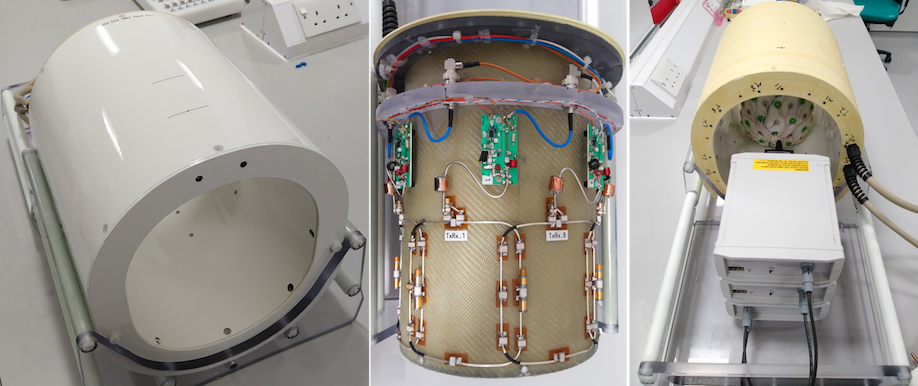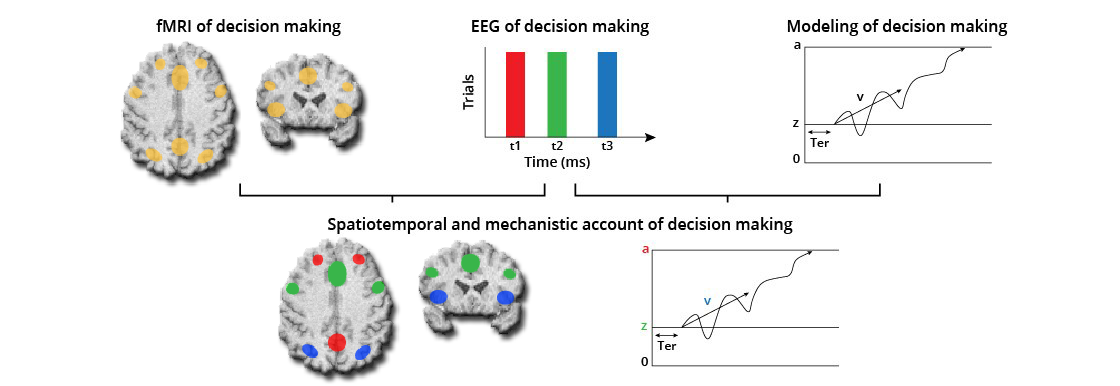
Our day-to-day lives involve frequent situations where we must make judgments based on noisy or incomplete sensory information – for example deciding whether crossing the street on a rainy morning, in poor visibility, is safe. How do we process and combine the incoming sensory information to form a decision? In this scenario, being able to additionally rely on an internal estimate of whether our perceptual judgment is accurate – that is, to rely on a sense of confidence – can further facilitate adaptive behaviour and decision making.

Similarly, on a daily basis we need to make a host of preference-based as well as socially-informed decisions – for example, deciding which piece of clothing to put on in the morning or which financial adviser to invest our savings with, respectively. In these instances, the subjective value/preference or the amount of trust we ascribe to the different options will vary. How do we weigh the pros and cons of the various alternatives? More generally, how do we combine different sources of probabilistic (uncertain) information to make decisions that are more likely to lead to a rewarding outcome?
Naturally, reinforcement-guided learning (that is, our ability to learn through trial and error) is pertinent in these situations as well. How does our prior experience (gains or losses) with the available options help us update our beliefs about different decision alternatives in order to improve our predictions – and hence our choices – in the future?

These scenarios are representative of some of the main theoretical questions our lab is currently involved with. To address these questions we have devised a multimodal approach (see below) to infer the brain networks involved in human decision making and learning as well as understand the mechanistic details of the underlying neural computations.
As we develop a more in-depth understanding of the relevant neural networks in healthy populations, we expand our work to facilitate a better characterization of maladaptive decision making and learning in psychiatric disorders. We are particularly interested in developing viable biomarkers for predicting treatment response and performing diagnostic stratification in depression and other personality disorders. Specifically, we focus on theory-driven computational and neuroimaging assays to develop mechanistically interpretable predictive biomarkers of clinical outcome. We hope that these biomarkers can afford important insights into key pathophysiologic processes and may thus help replace the current symptom-based nosology of mental disorders.
Our general research approach relies heavily on the fusion of two major disciplines: cognitive neuroscience and engineering. Cognitive neuroscience provides the foundation upon which the critical hypotheses about how the brain works to support behavior are framed. Engineering lends itself to finding new and innovative ways for collecting, analyzing and ultimately decoding the behavioral and neural data. The computational techniques used in our lab are motivated by classical problems in signal processing, machine learning and statistical pattern recognition.
Our ultimate goal is to go beyond mere “brain mapping” and to start looking for distributed neural representations and deciphering how information flow through a “network” can lead to changes in behavior. Our approach for tackling this goal is through fusion of simultaneously acquired electroencephalography (EEG) and functional magnetic resonance imaging (fMRI) data to enable a level of neuronal understanding that extends beyond what could be inferred with either modality alone.
For example, we demonstrated that electrophysiologically-derived fMRI predictors allow otherwise “static” fMRI activations to be absorbed by temporally-specific EEG components associated with internal processes of interest, offering a comprehensive spatiotemporal picture of the underlying networks and their interactions. We recently developed the first instance of a bespoke MRI coil (see figure below) that enables reliable EEG measurements during ultra-high field fMRI (7T), to map macroscale electrophysiological signals to different cortical layers and to different subcortical structures.

Central to our mission is the deployment of neurally-informed cognitive modelling to foster an enhanced understanding of the mechanistic principles and neural computations underlying human decision making and learning. For example, we demonstrated that this approach (i.e. constraining parameter estimation via neural data) does not only aid in the recovery of cognitive models but can also lead to the identification of latent cognitive states that would otherwise be missed with conventional modelling. Ultimately, this approach empowers new theoretical insights, which we use to inform future work and identify exciting new lines of inquiry.
Finally, we design new data analytics and machine learning methods to exploit the distributed nature (both in space and time) of our brain signals and extract reliable inter-trial and inter-subject response variability. We leverage these techniques to further enhance the utility of simultaneous EEG-fMRI by enabling a richer integration of the neuroimaging data and identifying distributed neural representations of interest while uncovering latent brain states often unobserved with more conventional (e.g., univariate, trial-average) analysis tools.
